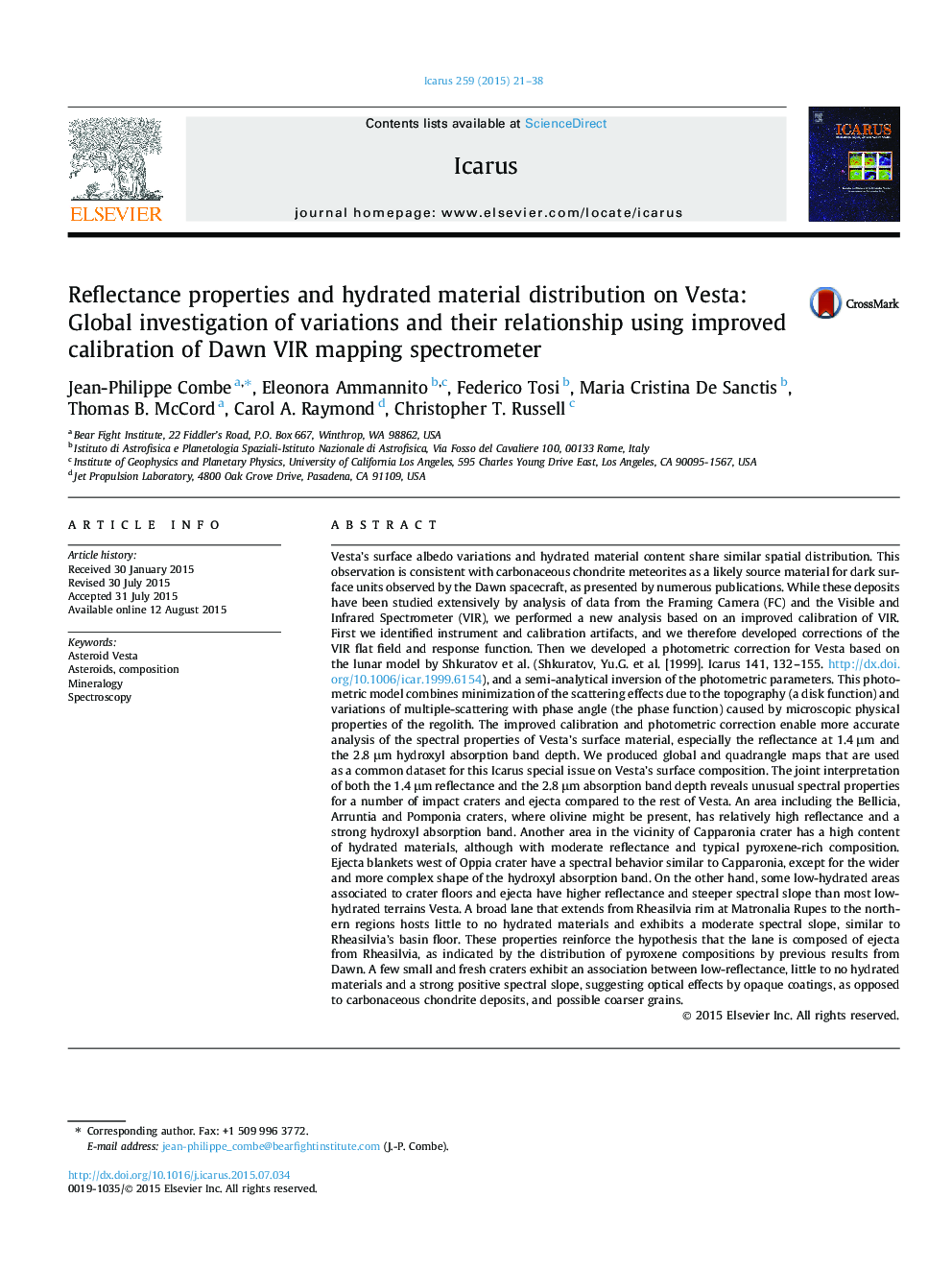| Article ID | Journal | Published Year | Pages | File Type |
|---|---|---|---|---|
| 8136037 | Icarus | 2015 | 18 Pages |
Abstract
Vesta's surface albedo variations and hydrated material content share similar spatial distribution. This observation is consistent with carbonaceous chondrite meteorites as a likely source material for dark surface units observed by the Dawn spacecraft, as presented by numerous publications. While these deposits have been studied extensively by analysis of data from the Framing Camera (FC) and the Visible and Infrared Spectrometer (VIR), we performed a new analysis based on an improved calibration of VIR. First we identified instrument and calibration artifacts, and we therefore developed corrections of the VIR flat field and response function. Then we developed a photometric correction for Vesta based on the lunar model by Shkuratov et al. (Shkuratov, Yu.G. et al. [1999]. Icarus 141, 132-155. http://dx.doi.org/10.1006/icar.1999.6154), and a semi-analytical inversion of the photometric parameters. This photometric model combines minimization of the scattering effects due to the topography (a disk function) and variations of multiple-scattering with phase angle (the phase function) caused by microscopic physical properties of the regolith. The improved calibration and photometric correction enable more accurate analysis of the spectral properties of Vesta's surface material, especially the reflectance at 1.4 μm and the 2.8 μm hydroxyl absorption band depth. We produced global and quadrangle maps that are used as a common dataset for this Icarus special issue on Vesta's surface composition. The joint interpretation of both the 1.4 μm reflectance and the 2.8 μm absorption band depth reveals unusual spectral properties for a number of impact craters and ejecta compared to the rest of Vesta. An area including the Bellicia, Arruntia and Pomponia craters, where olivine might be present, has relatively high reflectance and a strong hydroxyl absorption band. Another area in the vicinity of Capparonia crater has a high content of hydrated materials, although with moderate reflectance and typical pyroxene-rich composition. Ejecta blankets west of Oppia crater have a spectral behavior similar to Capparonia, except for the wider and more complex shape of the hydroxyl absorption band. On the other hand, some low-hydrated areas associated to crater floors and ejecta have higher reflectance and steeper spectral slope than most low-hydrated terrains Vesta. A broad lane that extends from Rheasilvia rim at Matronalia Rupes to the northern regions hosts little to no hydrated materials and exhibits a moderate spectral slope, similar to Rheasilvia's basin floor. These properties reinforce the hypothesis that the lane is composed of ejecta from Rheasilvia, as indicated by the distribution of pyroxene compositions by previous results from Dawn. A few small and fresh craters exhibit an association between low-reflectance, little to no hydrated materials and a strong positive spectral slope, suggesting optical effects by opaque coatings, as opposed to carbonaceous chondrite deposits, and possible coarser grains.
Related Topics
Physical Sciences and Engineering
Earth and Planetary Sciences
Space and Planetary Science
Authors
Jean-Philippe Combe, Eleonora Ammannito, Federico Tosi, Maria Cristina De Sanctis, Thomas B. McCord, Carol A. Raymond, Christopher T. Russell,
